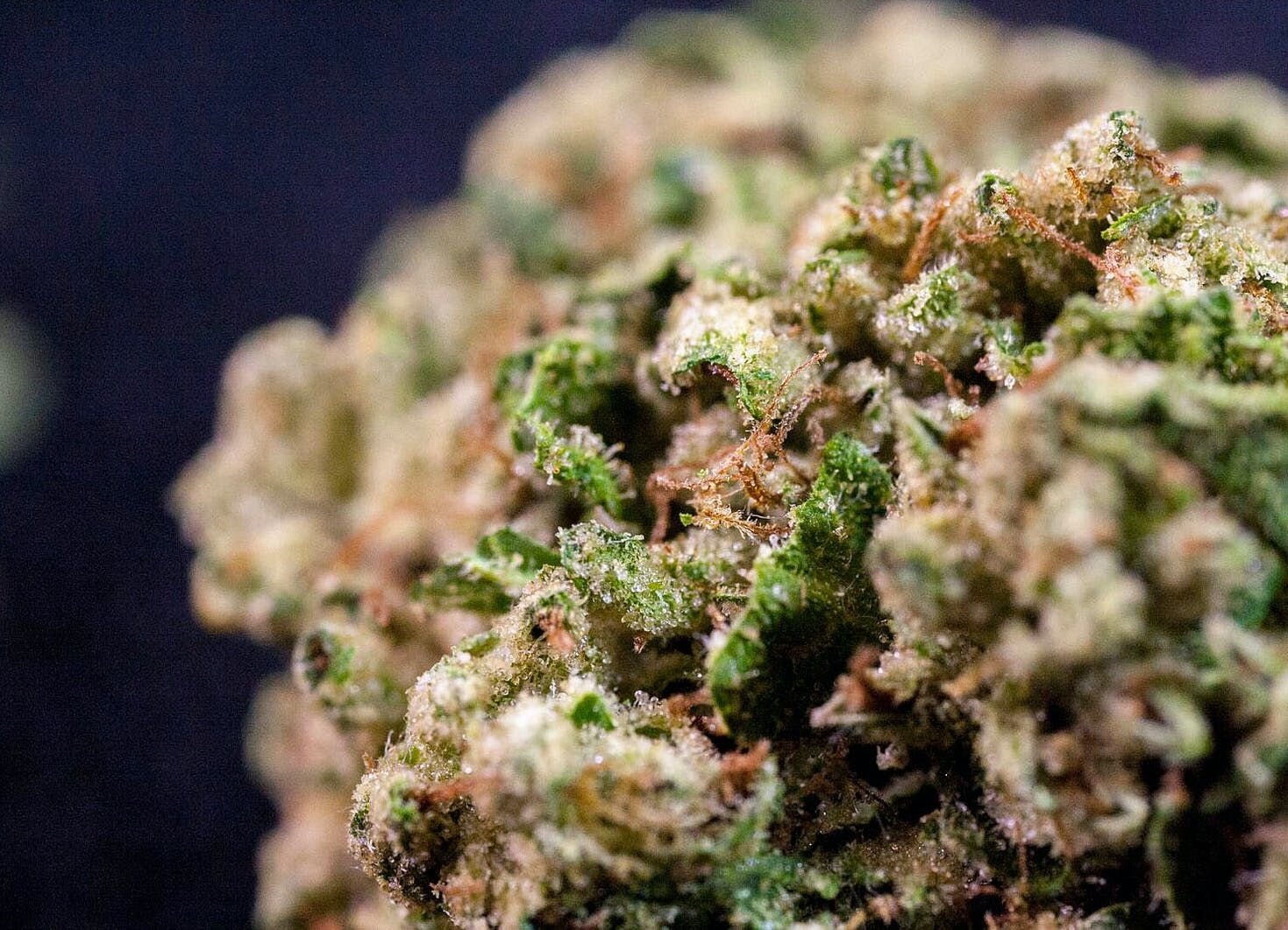If you’re familiar with cannabis science, you know about CB1 and CB2, the receptors located throughout the body that are triggered by cannabinoids like tetrahydrocannabinol (THC) and cannabidiol (CBD). It’s via these receptors that THC and CBD are able to bring about some of the therapeutic effects that cannabis is known for.
While CB1 and CB2 get the most attention—likely because we know the most about them—there are other receptors in the body that also respond to cannabinoids, like TRPV1 and GPR55. These receptors are influenced by THC and CBD, as well as anandamide and 2-arachidonoylglycerol (2-AG), endocannabinoids made by our bodies.
We’re beginning to gain a better understanding of TRPV1 and GPR55. Both hold much therapeutic promise, and CBD may be one of the ways to unlock this potential.
FOLLOW US ON FACEBOOK & INSTAGRAM
The TRPV1 Receptor Controls Our Pain Response
TRPV1, also called vanilloid receptor 1 or the capsaicin receptor, helps control our body temperature and plays a role in how we feel pain. This receptor can be activated via physical and chemical cues, including:
- Temperatures above 109 degrees F
- Capsaicin, the molecule responsible for the spicy sensation of chili peppers
- Acidic conditions in the body
- Anandamide
- CBD
Indeed, TRPV1 is one of the few receptors we know of that CBD directly influences; CBD doesn’t really bind to CB1 or CB2. CBD’s affinity for the TRPV1 receptor may be one of the ways it brings about therapeutic effects in the body, and some studies are beginning to shed light on this.
A 2004 study on rats found that CBD acts in a similar way to capsaicin. When we eat a chili pepper, capsaicin acts on the TRPV1 receptors in our brain cells, making us feel that burning sensation we associate with spicy foods.
These brain cells then become desensitized—they no longer signal that burning sensation to our brain when capsaicin acts on TRPV1. This is perhaps why some people have a higher tolerance for spicy foods: Their TRPV1 receptors have become desensitized.
But capsaicin does more than make our mouth burn when we eat spicy foods. It also has anti-inflammatory and anti-seizure properties.
The researchers in this study think that CBD behaves in a similar way to capsaicin—except without imparting that spicy sensation. Somehow CBD desensitizes TRPV1 receptors, thus reducing our pain response. And we already know that CBD has pain-relieving effects and can help those with epilepsy—as much anecdotal evidence suggests.
Researchers Focusing on TRPV1 in Epilepsy & Endometrial Cancer Studies
Indeed, TRPV1 likely has something to do with CBD’s anti-seizure abilities. Rodents with epilepsy and some human epilepsy patients tend to have more TRPV1 receptors than their healthy counterparts. It’s possible that the body makes more of these receptors in response to the condition.
Knowing this, researchers decided to test the effect of CBD on mice with and without TRPV1 receptors. They subjected the mice to electric currents high enough to produce seizures and found that mice without the TRPV1 receptors were more susceptible to seizures. The results suggest that CBD was acting on TRPV1 to reduce seizures, since those without TRPV1 receptors were more likely to get them after being subjected to electrical currents.
Most recently, research has suggested that substances that attach to TRPV1 may be useful in treating endometrial cancer, though this evidence is preliminary. In a petri dish, researchers exposed susceptible cells to high levels of estrogen to make them cancerous. They then monitored what happened in the presence of THC and CBD.
The researchers found that CBD, but not THC, caused these cancerous cells to die. They believe that CBD was doing this by acting on the TRPV1 receptor. While these results are promising, much more research is needed.
RELATED: CAN CANNABIS HELP DEFEND AGAINST ENDOMETRIAL CANCER?
GPR55 Plays a Role in the Development of Cancer
GPR55 is what’s known as a G-protein coupled receptor—the same type of receptor as CB1 and CB2. GPR55 is a likely contributor to many of cannabis’s health benefits, though we still don’t have the whole picture.
This receptor can be activated by both anandamide and 2-AG, as well as THC. Because GPR55 seems to interact with many cannabinoids, some researchers think that it could be the much-speculated-about third cannabinoid receptor, or CB3, but this hasn’t been confirmed yet.
Interestingly, CBD doesn’t activate this receptor. Rather, it prevents other substances from attaching to it. Researchers think that this special quality may be one of the reasons behind CBD’s therapeutic effects, and they think it could have applications in many conditions including cancer, gastrointestinal inflammation and certain seizures.
Research links GPR55 activation with tumor activity. Thus, something that prevents substances from binding to this receptor, like CBD, could have an anti-tumor effect, though the molecule’s capacity to do this hasn’t been tested yet.
So far, researchers have tested the ability of substances that block GPR55 in the following cancers:
- Brain
- Breast
- Colorectal
- Pancreatic
The results have been positive, though it’s important to remember that these studies were preliminary.
How GPR55 Impacts Inflammatory Bowel Disease & Dravet Syndrome
We know that CBD has anti-inflammatory properties. Yet we don’t know why it tends to provide relief for folks who suffer from inflammation of the colon and intestines, commonly known as inflammatory bowel disease. Here, GPR55 may again be part of the answer.
People with Crohn’s disease and ulcerative colitis tend to have more GPR55 receptors in their bodies than their healthy counterparts do. And studies on mice where molecules block GPR55 lead to a reduction in intestinal inflammation. We’ll have to wait and see whether or not CBD has similar effects in future studies.
Though it’s likely that TRPV1 has something to do with CBD’s anti-seizure properties, GPR55 may be doing something as well. In order to better understand why patients with Dravet syndrome, a severe form of epilepsy, tend to respond favorably to CBD, researchers tested the effect of CBD in a mouse model of this condition.
They found that CBD reduced seizure activity by binding to GPR55 receptors in the hippocampus, a part of the brain that seems to play an important role in seizure activity.
The anti-seizure activities that can be credited to both GPR55 and TRPV1 highlight how many different factors must come together to produce cannabis’s therapeutic effects. CB1, CB2, TRPV1 and GPR55 are just some of the receptors in the body that THC and CBD interact with—there are many more that researchers are just beginning to understand.
Cannabinoid science is a field of study that’s still in its infancy. As research progresses, it’ll paint a clearer picture of the endocannabinoid system and how cannabis can be used to its full medical potential.
If you’re new to cannabis and want to learn more, take a look at our Cannabis 101 post. HelloMD can help you get your medical marijuana recommendation; it’s easy, private and 100% online.






